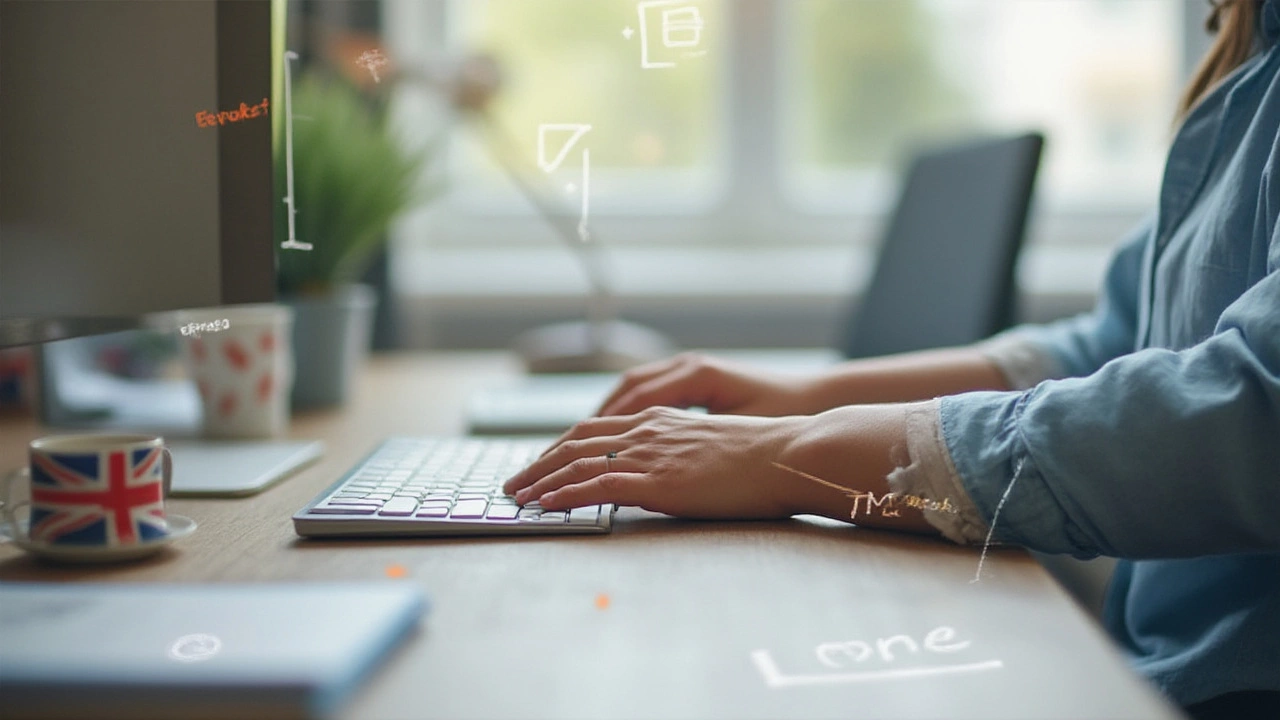Ever plopped down at your desk, only to feel a twinge in your back or notice your shoulders creeping up toward your ears after a few hours? Turns out, your seat height could be doing more harm than you realize. The little details—like whether you’re sitting a bit too low or just a hair too high—have a sneaky way of adding up, leading to everything from tight neck muscles to your legs falling asleep. What surprises most folks isn’t just how big a difference desk height makes, but how personal the solution actually is. So, is it better to sit lower or higher at your desk, or is there a sweet spot hiding somewhere in the middle? Let’s break down the facts, stories, weird science, and the little hacks that make your day at the desk way less painful—and maybe even a lot more productive.
The Science Behind Desk Height and Body Mechanics
Your body is a weirdly balanced machine, with joints, bones, and muscles all designed to work best when aligned just right. When you sit too low, your arms bend at sharper angles, your wrists strain to reach the keyboard, and your eyes have to tilt up—leading to tension headaches and bunched-up shoulders. Shift too high, and you find yourself peering down at screens, elbows forced straight, and your back arched in a way that can leave you aching for days. Most ergonomic guides peg the “ideal” desk height for typing at about 28-30 inches (71-76 cm), but that assumes an average person. Are you average? Doubtful. Even a 2024 workplace wellness survey found less than 45% of employees actually use desks at a recommended height. Swapping stories, I heard once from a developer who realized after a dozen years of back pain that it wasn’t his chair—it was a desk an inch too high.
Basic physics explains why positioning matters: when your forearms can rest parallel to the floor and your feet are flat, there’s less strain traveling up your kinetic chain. In fact, the American Academy of Orthopaedic Surgeons says arm positioning is directly linked to neck pain in long-term computer users. Want a quick test? Sit down naturally, and check whether your elbows fall between 90 and 110 degrees, wrists hovering comfortably over the keyboard, knees bent at or just below hip level, and both feet flat. If that’s the setup, you’re close to the sweet spot. If not, your height could be sabotaging you. It’s wild how a half-inch can make the difference between an easy work session and four hours of shifting and sighing.
And it’s not all about the keyboard, either. If your desk height is off, your monitor follows—forcing your head forward or neck tilted. Small errors at the desk become big problems after weeks, months, or years. That’s why so many tech offices run ergonomic checks and even map workstation setups to decrease injuries. In one recent study from Stanford, proper ergonomic adjustments led to a 54% reduction in reported musculoskeletal complaints over just six months. Now, nobody’s saying you need a PhD in sitting, but a little tweaking can make a world of difference.
Pros and Cons: Sitting Lower vs. Sitting Higher
Sitting lower at your desk gives benefits like keeping your shoulders relaxed and your hips open—both great for long-term lower back comfort. But sink too low, and suddenly your forearms strain upward, wrists bend awkwardly, and your eyes stare up at your screen like you’re in the nosebleed seats at a concert. Seriously, ever try to work with your knees up to your chest? Not fun.
But crank your chair too high and new problems surface. Now your feet might dangle, blood flow gets cut off at the thighs, and your wrists slope down hard over the keyboard—to say nothing of the pressure placed on your lower spine. You can fix the foot-dangling thing with a footrest, but nobody actually uses one unless they’re forced to. If your monitor doesn’t raise with the rest of your setup, get ready for a sore neck by five o’clock.
If you dig into health records, you’ll see people who work at improperly high desks face more reports of neck and upper back pain. Lower desk setups, if not matched to chair and screen, lead to wrist repetitive strain injuries (RSI) and hip stiffness. There’s a reason so many companies shell out for adjustable chairs and desks in recent years. Most office furniture manufacturers have caught on and now offer height recommendations based on your actual measurements—not one-size-fits-all solutions.
The Graph below breaks down the most common symptoms reported by workers at various desk heights based on a 2023 office study:
| Sitting Position | Most Common Reported Pains | Percent Reporting Issues |
|---|---|---|
| Too Low | Wrist pain, shoulder tension, eye strain | 62% |
| Too High | Neck pain, upper back pain, leg numbness | 51% |
| Optimal/Fitted | Minimal discomfort | 17% |
So, both too low and too high have their own brand of misery. It’s not just about picking one or the other—it’s about fine-tuning, much like picking shoes that actually fit instead of defaulting to whatever was cheapest.

Finding Your Personal Sweet Spot
Your exact desk height sweet spot depends on your size, the type of chair you use, and the work you’re doing. A graphic designer hunched over a tablet needs a different setup than someone who crunches spreadsheets all day. The first step: measure. Stand and sit with feet flat on the floor, knees bent about 90 degrees. Adjust your chair so your thighs are parallel, then put your arms comfortably at your sides and flex your elbows. Ideally, the surface for typing or writing should land just a tad below your elbows—think 1-2 inches.
If your feet don’t touch the floor in that arrangement, you’ll want a footrest (but a stack of books works fine), not a lower chair. Wrist support helps if your hands are prone to strain—but don’t overdo it; soft, flat support is better than thick, padded versions that can angle your wrists weirdly. Arrange your monitor so the top is at or just below eye level—a stack of printer paper gets the job done if you don’t have a fancy riser.
Another point: frequent adjustments. Even perfect positions get uncomfortable if you’re frozen in them for hours. Grab a timer and remind yourself every hour to shift, stand, or walk, even if just for a few minutes. More movement keeps blood flowing and tension from building. Ergonomists say posture variety matters just as much as correct positioning—anything that keeps you from getting locked in for too long helps.
Here’s a quick checklist when setting up your personal desk:
- Chair height allows both feet flat on the floor (or footrest).
- Knees level with or slightly lower than hips.
- Desk surface about an inch below flexed elbows.
- Wrists floating or lightly supported, not bent up or down.
- Monitor top sits at or just below eye level, straight ahead.
- Room for your knees and thighs under the desk—no squeezing.
If you use a standing desk, many of the same rules apply—you just want your elbows still at roughly ninety degrees, with the monitor high enough so you don’t have to tilt your head. Adjustments get easier with adjustable desks, but you can make it work with books, risers, or a stack of boxes if you have to DIY it.
Why Desk Height Affects More Than Just Comfort
If you’ve ever powered through a typing session only to end up sleepy, cranky, or even foggy-headed, desk height might be to blame. A recent study from Japan in 2022 linked poor ergonomic fit with lower cognitive performance—those typing from awkward positions simply made more typos and finished less work. Sitting too high or too low squeezes your body, cuts off circulation, and triggers stress signals that distract your brain. Even posture experts point to lap-testing, showing muscle tension rising up to 35% when elbows are forced up or down too much. Small changes—like adding a cushion, footrest, or riser—can reduce reported pressure by close to half.
Desk height affects how well you breathe, too. Hunching or perching raises pressure in the chest and can drop lung capacity by up to 20% (tested at a Dutch university in 2023). Nobody thinks about oxygen while working, but when you get it right, your energy actually goes up. Add in the mental boost from less pain, more comfort, and it’s not just a matter of ‘getting by’ but actually thriving at your station.
Don’t forget about the eyes. Glare from looking up at a screen set too high or too low can double your risk of eye strain, says an optometrist I chatted with last month. If you catch yourself rubbing your eyes or squinting by dinner, your desk setup could be crying out for help. Use that monitor height tip, and you’ll notice a difference within a few days.
There’s also the productivity bonus. According to a 2024 European Commission report, correcting workstation setup (including desk height) led to a 12% boost in productivity after just one month. Talk about easy wins: tweak your seat, work smarter, and feel better—all at the same time.

Real-World Tips for the Perfect Desk Setup
All the studies and guides in the world mean zip if it doesn’t feel right for you. Listen to your body—if something aches: tweak, shift, or add a simple fix. Here’s how lots of savvy desk jockeys hacked their way to comfort:
- Try stacking books under your monitor or laptop if it sits too low. Just a 2-inch boost can fix neck pain.
- Add a rolled-up towel or small lumbar pillow behind your lower back if your chair sags. It takes the pressure off your spine.
- If you swap between sitting and standing, use tape marks on the wall or the desk itself to remember exactly where you feel best so you can return to your custom ‘settings’ every time.
- Test keyboard trays—some love them for wrist comfort, others find they put arms at a weird angle. Borrow a friend’s before buying.
- If your desk is fixed too high, boost your seat and slide a box under your feet. If it’s too low, try sliding a sturdy board under the desk feet—simple, but often overlooked.
- Grab a free workplace ergonomic consult if your company offers one. Those experts can spot a posture killer at twenty paces.
- Use a posture app to nudge you if your shoulders are creeping up or your head's jutting forward. These reminders, silly as they seem, help build good habits.
Check your ‘fit’ by sitting down, relaxing your shoulders, closing your eyes, and opening them naturally. If you’re looking straight ahead at your screen and typing without reaching up or dropping your wrists, that’s success. Don't be afraid to experiment. Your perfect setup is unique, and small tweaks—sometimes almost laughably simple—can make a massive difference in how you feel and work.
So, is it better to sit lower or higher? Neither wins the trophy. The best desk height is the one that lines up with your body—elbows bent, wrists straight, shoulders relaxed, and feet well planted. Pay attention to the signals your body sends, and you'll find your groove. Your future self—with a happier back, less pain, and more focused workday—will thank you.


Write a comment